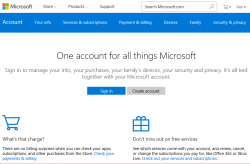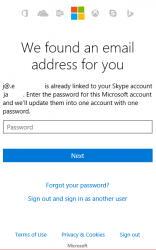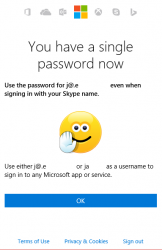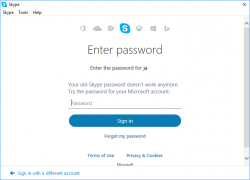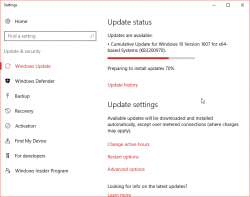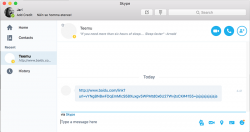What's wrong with HTTPS: Part 3 - Certificate governance
Wednesday, November 30. 2016
In the previous part we established that any certificate authority can issue a certificate to any website, even if the website admin doesn't want them to do that. This post is about technical measures attempting to monitor certificate authorities' actions.
Details that need to be addressed somehow
A certificate lifecycle is very simple. One is issued by a CA, it is used by a server and eventually it expires. When things go sideways, the server administrator may want to revoke an otherwise valid and good certificate, so there needs to be a mechanism to handle a single special case. So, two actions: issuance and revocation. Everything else is handled by itself.
To monitor certificate issuance and revocation, following requirements apply:
- Monitor when somebody issues a certificate for your website
- Preferably everybody in the entire Internet needs to know about this instantly. You decide if the issuance is good or bad thing.
- Man-in-the-middle using a fake certificate
- When a subset of users is being targeted, clients need to know that the certificate being offered doesn't belong to the server the certificate supposedly is for.
- No trusted parties
- This is something we learned from X-Files (the TV-show), trust no one! Any possible parties needed in verification must be assumed to be offering false information, or alternatively it needs to be digitally tamper-proof.
- Instant deployment of a new certificate
- When you setup a server and a certificate to it, how do you notify everybody about that? Preferably no notification is needed.
- No need to modify servers
- How is the actual server setup done. What parts you need to add there. Preferably none.
- No additional requests during connection
- When a client requests data from your server, which additional requests to another parties are needed? Preferably none. Remember, that this type of additional request need to succeed in a split-second to make the decision wheter to open a connection to a requested server or not.
(This list is actually "borrowed" from certificate transparency tech comparison. Its just so comprehensive, so I had no other option than to use it.)
Certificate revoke list, aka. CRL
This is what we have since dawn of SSL. The idea is to go request the issuing CA and see if an already issued valid certificate is revoked. This information is published in a revocation list. The obvious problem is that revocation information doesn't happen instantly, and actually most browsers don't ever check a CRL.
To distribute the CRL-information, an issued certificate is supposed to have an URL to CRL (typically they do) and a client is supposed to be downloading that data periodically (typically they don't). In reality that doesn't work, as nobody wants to spend their precious time and bandwidth for downloading a ever-growing list of bad certs. To address that, there is a modern approach, Online Certificate Status Protocol or OCSP. It is supposed to be much faster operation with minimal bandwidth usage.
Neither of these really work well because of the need for an additional request. Also OCSP has a major fault, that a reply can be stored and "played back" on a query, so the reliability is more than questionable.
Certificate Transparency
This is the newest one and it has a good chance of becoming the commonly accepted method for tracking certificate issuers' actions. There is an RFC 6962 defining Certificate Transparency and the source code is distributed as open-source allowing anybody to see how it works and do their own audit on it. Originally the project is initiated by Google, but number of CAs already accepted the technology including Symantec, Digicert. and Globalsign. One reason for wide adoption is, that Google (the author of Chrome browser), made an ultimatum, that the seriously expensive Extended Validation certificates need to have CT signature in them for Chrome to accept them as valid.
Internally CT works with a Merkle hash tree, something that BitCoin uses internally. So, it is safe to say, that this technolocy is a blockchain. Blockchain as a tech is quite new, but robust and reliable. The good thing about Certificate Transparency is, that this tech supports all requirements from above list. All a browser needs to do is periodically load the CT logs and during a connection, read the CT-signature from server's certificate, and based on that a browser can instantly verify or decline the server's certificate.
As mentioned, Certificate Transparency needs to be supported by your browser. Being a Google project, of course Chrome does support CT since version 35. Mozilla Firefox has announced support for CT, but at the time of writing there is no implementation yet. Microsoft doesn't support CT and they announced that that they're doing something of their own for IE11, naturally their new Edge browser doesn't support CT either. So that pretty much lands Chrome being the only browser really supporting this. The good thing is, that there exists many server-to-server monitors, for example Certificate Transparency Monitor.
Not accounting for poor browser support, another weakness CT has is that every certification authority has to include CT-signature in their issued certificates and publish their CT logs to general public.
DANE
DNS-based Authentication of Named Entities, or DANE is the first serious attempt to enforce certificate's ownership. The tech is described in RFC 6698 and multiple accompanying RFCs to clarify details of it's implementation. However, DANE hasn't received much public acceptance.
This is how Wikipedia defines DANE: "DANE enables the administrator of a domain name to certify the keys used in that domain's TLS clients or servers by storing them in the Domain Name System (DNS). DANE needs the DNS records to be signed with DNSSEC for its security model to work."
As the above definition says, for DANE to work, a prerequisite is functioning DNSSEC. Nobody has that! Some stats at http://rick.eng.br/dnssecstat/ show that the situation is horrible. ![]() So, no DNSSEC, no DANE. Also DANE fails on two other things: additional requests are needed to DNS during connection and you need to trust the DNS-server response. DNS data can be forged or poisoned, so there's that.
So, no DNSSEC, no DANE. Also DANE fails on two other things: additional requests are needed to DNS during connection and you need to trust the DNS-server response. DNS data can be forged or poisoned, so there's that.
Pinning
Certificate pinning, or HTTP Public Key Pinning is an extension header of a HTTP-response. This is yet another Google-project, but its not widely adopoted. The idea for the web server to send public key information on every response, then the web browser is supposed to locally store the information for specified time. Then any subsequent responses from that same server are supposed to have the same information in them what was cached before. Weakness is that, the initial request needs to go to the real server. If your traffic was "man-in-the-middled" already at that point, you won't get any warnings.
Pinning is supported in Chrome and Firefox, but as Microsoft nor Apple support this, it is missing from IE, Edge and Safari. There is a funny mistake in Microsoft Edge's feature list as it states Firefox not supporting pinning, but Firefox was one of the early browsers supporting this feature.
Weaknesses here are, that it requires changes both on server and client sides. Also, when the certificate is legitimately changed, there really isn't a sensible mechanism to inform about that.
Collecting every web server certificate, aka that thing Google is doing
As you may remember from part 2 of this series, most of the rogue certificates issued are for Google services. So, they're fighting this by collecting all the certificates they see. They have a massive army of bots crawling web servers all the time. Google is also publishing their findings in a Certificate Transparency log for any interested parties to see. As mentioned before, there are publicly available non-Google services monitoring the CT-logs for abnormal changes.
This is very simple idea, if you see your certificate listed there, the certificate was issued by your request or somebody else's. It should be rather simple task to determine which one was it.
Anybody can use the human interface at Google Transparency Report site.
The future?
None of these technologies is really either useful, or widely adopted by major vendors. Fact remains: due to number of past incidents Certificate Authorities need to be monitored, supervised and publicly scrutineered. The best thing to attempt is to add some transparency to their actions. Which technology that would be is yet to be seend. What worries me is Apple's and Microsoft's total ignorance for this matter. I guess they'll need to be targeted first to wake up from their deep sleep.
This is the last part of my HTTPS-series. First part was about basics of trusted certificates and second part part was about misappropriation of trust.
What's wrong with HTTPS: Part 2 - Untrustworthy Certificate Authorities
Sunday, November 27. 2016
In the previous part we established the fact, that for HTTPS to work as intended, you as a web browser user need to trust your browser vendor's decision to trust the certificate authorities issuing the certificates to web server maintainers. This post is about when things go wrong, the chain-of-trust is broken and organization's actions are deemed not so trustworthy.
Known CA security incidents in chronological order:
- 2010 (multiple incidents): Key Internet operator VeriSign hit by hackers
- There isn't much information available on this, but they disclosed this on their quarterly report.
- "Are we finally ready to accept that the certificate system is completely broken?"
- Bruce Schneier, on his blog
- March 2011: Hackers target Google, Skype with rogue SSL certificates
- Comodo was cracked, and certificates for orgs like Google were issued without them knowing about it.
- August 2011: Hackers stole Google SSL certificate, Dutch firm admits
- DigiNotar was cracked and Google certificates were created. Later DigiNotar went bankcrupt as they reputation was gone.
- December 2013: French Government ANSSI responsible of a MITM against Google SSL-TLS
- French CA issuing Google certificates
- July 2014: Indian government agency issues fake Google certificates
- This is really bad! A government agency in India issuing Google certificates. I'd understand a company doing that, but government... no.
- December 2014: Turkish Certificate Authority screwup leads to attempted Google impersonation
- Turkish CA issuing Google certificates
- March 2015: Google to drop China’s CNNIC Root Certificate Authority after trust breach
- A Chinese CA issuing Google certificates.
- September 2015: Symantec employees fired for issuing rogue HTTPS certificate for Google
- Inside job at Symantec, guys wanted to issue Google certificates
- October 2016: Distrusting New WoSign and StartCom Certificates (on Mozilla and on Google)
- WoSign issued certificate for GitHub, yet another inside job.
As you already figured out the pattern. Anybody can issue any certificate for anybody. This many-to-many pattern isn't very trustworthy. ![]() Also, there seems to be more activity during the past two years or so, there is clearly more interest in gaining access to somebody's certificate.
Also, there seems to be more activity during the past two years or so, there is clearly more interest in gaining access to somebody's certificate.
In part 1 of my HTTPS-series it was established, that a X.509 certificate cannot identify the server. Now that cert-business sells certificates with a claim, that they have "verified" the request and the owner is who they claim to be, the above list tells another story. Nasty things happen when there is no verification, no real customer, but a malicious act of issuing a certificate for own cracking purposes.
Other acts of mistrust:
- January 2015: Gogo Inflight Internet serves up 'man-in-the-middle' with fake SSL
- Inflight service provider goes man-in-the-middle on purpose. Of course all bad deeds can be wrapped into good intentions, they wanted to "protect the bandwidth usage".
- February 2015: Lenovo PCs ship with man-in-the-middle adware that breaks HTTPS connections
- Lenovo laptops were pre-installed with a certificate used for snooping your HTTPS-traffic. The thing is: if anybody can inject a trusted root certificate to your computer, you won't notice that somebody is reading your encrypted traffic.
- November 2015: Dell does a Superfish, ships PCs with easily cloneable root certificates
- Yet another pre-installed certificate making man-in-the-middle. Every computer had same PKI installed making anybody able to eavesdrop your carefully encrypted traffic.
These acts are as evil, altough different by nature, but target the same thing: to gain access to your encypted data.
Ok, what's the risk here?
In practice, what is the threat here? What are those "nasty things" that can happen?
The incidents where new computers had a pre-installed trusted certificate, or your traffic was forced via man-in-the-middle -proxy are easier to address. Without you realizing it, all your encrypted traffic is directed to a party faking to be your intended target. Man-in-the-middle just de-crypts your passwords and credit card numbers and passes the traffic forward to the real target server acting as you. So, there is an obvious direct risk, that your traffic isn't secure at all.
Somebody issuing a trusted rogue Google certificate is bit more complex. A certificate itself isn't too dangerous, but in a scenario where the outgoing traffic from your computer is re-directed to a rogue server having the certificate you won't be able to tell the difference. How somebody's traffic can be redirected can be done locally, by changing your DNS-settings or remotely attacking the DNS-server your're using. Both cases are seen in real life. Nevertheless, it is almost impossible to know that such a change has been made and you go to a fake "google" server, enter your password without realizing, that somebody else is in possession of your login credentials. These cases haven't been publicly reported, but if anybody manages to pull that one off, it would be really really bad. Ultimately, there is only indirect risk, that you may lose your secure data.
Ok, this insecurity is horrible, isn't there anything we can do?
Yes.
There are a number of technical innovations trying to govern the certificates. However, none of them are widespread nor commonly accepted. This leaves everybody at the mercy of certificate authorities and their actions.
I'll address those technical measures in my final part of this HTTPS-series.
This is the second part of a three part series addressing HTTPS and it's (in)security. Previous part was about basics of trusted certificates. Next part is about (failed) attempts to supervise if the trust is there or not.
What's wrong with HTTPS: Part 1 - Trust issues
Friday, November 25. 2016
Three years ago I was inspired by Scofield (or Mr. Harri Hursti) when he claimed that SSL is broken and it cannot be fixed. See the post for details. In reality tech can be fixed, my previous HTTPS-post is about shortcomings and fixes of TLS-encryption. This time I'm writing about another type of HTTPS-shortcoming, trust. This is between humans and is much much harder to fix.
Ok, most users don't see the difference between HTTP and HTTPS. They simply don't pay any attemtion if their address-bar has the lock in it or not. Those rare who do make the distinction between encrypted and non-encrypted web sites are blissfully ignorant about the inner workings of HTTPS. They don't understand the concept of a X.509 certificate nor the need for one. A certificate is needed to (I'm quoting Wikipedia article here) certify the ownership of a public key by the named subject of the certificate. The ownership of a key is important, it is used to make sure the communication parties are the same who initiated the connection. Without that, the security could be easily breached with a man-in-the-middle -attack.
What the certificate isn't designed is to identify nor verify the certificate holder. Technically, the certificate has a suitable field name subject. In HTTPS-certificate, it contains the hostname (or domainname in a wildcard certificate) of the server a secured connection is initiated to. If a certificate is used on a different server, the hostname used for connection and issued in the certificate won't match, and the lock won't "lock" or "go green" depending on your choice of a web browser.
The part where trust comes into play, is because the system is built so, that somebody issues the certificate. There is a chain of certificates to follow up to a root certificate to somebody who has authority to issue them. Any newly generated certificate is untrusted by your browser by default, unless the issuer root certificate is pre-added to your browser. That's where the certificate business (read: money) is. A certificate issuer has gone trough the hard work of pre-installing their certificate to all commonly used web browsers so that some website owner can come in and purchase a certificate from them and it will work and be trusted by any website visitors. What happens here is, you as the website visitor implicitly trust the website you are visiting, because somebody you don't know said they're who they announce themselves to be and they promised to be ok when asked about it. Of course browser and operating system companies play along with this, they do their due diligence and accept requests to distribute those root certificates to establish trust between the issuer and a website.
That's a bold request! Why should I trust somebody whose name is Verisign or Thawte or TeliaSonera, whom I know nothing about! No reason. But that's how security in Internet works. ![]()
This is the first part of a three part series addressing HTTPS and it's (in)security. Next part is about misappropriation of trust. Third part is about (failed) attempts to supervise trusted authorities.
Removing old Skype-login and going for Microsoft Account
Monday, November 21. 2016
This is a solution to my request #3 to Microsoft which I made in my post about Skype hack. Doing this will vastly improve your security for Skype-logins as the old Skype account and password cannot be used to login anymore.
Step 1: Merge Skype-account and Microsoft Account
For this sequence to work I have an existing Microsoft Account which is linked to my old Skype account. Also to state the obvious, I have different random password for every single service I ever use.
Go to https://account.microsoft.com/.
Login there with your Skype-account.
This is important! You need to use the old Skype-account for logging in.
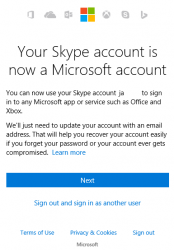
The message clearly states "Your old Skype password doesn't work anymore". A login with Microsoft Account password does work.
Step 2: Limit allowed login accounts
Yet again, go to your Microsoft Account. See More security settings:
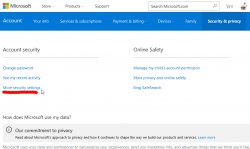
In there, you'll find Change sign-in preferences:
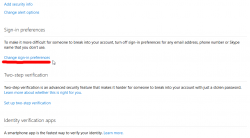
Now you see a list of possible logins to use:
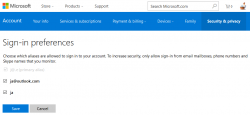
Un-check / check the ones to suit your login needs. I went for a single one, of course.
That's it. Done!
Now your Skype login security is vastly improved.
Skype protocol hacked, part 3
Saturday, November 19. 2016
This one won't fade away, so I'm taking a third swing at the subject. Previous posts are here and here. I've been actively following the conversation in Sype community's Security, Privacy, Trust and Safety board's discussion thread "Link to "baidu" website sent to all of my contacts".
Recap, what happened so far
Tons of fake links are being sent to people via Skype as chat messages. The chat is originating from somebody you already know and who is in your Skype's contact list.
Microsoft has stated "Some Skype customers have reported their accounts being used to send spam" when asked about it. That is true, people have been their Skype-accounts hacked by automated attacks based on leaked passwords and those accounts have been used to send crap to their contacts. However, this beef isn't about that. This beef is about the fact, that people whose Skype-accounts HAVE NOT been hacked, are sending crap to their contacts.
Microsoft went the classic way: "change your password". People did that. The same people are STILL sending crap to their contacts. For that, there is no official statement besides to (this is so ridiculous, I have to quote this verbatum) "Delete UNKNOWN Entry from HKEY_CURRENT_USER\Software\Microsoft\Windows\CurrentVersion\Run and Delete all UNKNOWN files under %appdata%\Roaming". Link to the exact instructions is here. So, I consider myself to be well educated about finer details what's inside Windows registry or Windows user profile. Because there are thousands of entries there, I don't know all of them, it is impossible to tell which of them are unknown and which are not. How would somebody with almost no experience be able to do that! ![]() Actually the magnitude of Microsoft support blunder is so huge, they wiped off the chat log from the discussion board and Box.com.
Actually the magnitude of Microsoft support blunder is so huge, they wiped off the chat log from the discussion board and Box.com.
What people have also established, that there are two ways to login to a Skype session on any Skype-client. There is the old fashioned Skype-way and Microsoft Account. You can set a two-factor authentication into Microsoft Account, but not for Skype. Now that there are two ways to login, also please, remember that Skype can be run on multitude of mobile devices, Windows, Mac or directly from https://web.skype.com/. So, huge amount of attack surface exists there. What people have also established, that un-installing Skype from your device-of-choice doesn't make the problem go away, you'll still keep sending links to your contacts. So, reducing your personal attack-surface doesn't do it for you.
Obviously lots of people are royally pissed about this. Also Microsoft playing down their damage and offering completely useless support doesn't help.
The client devices are not compromized
When this kind of weird occurrence happens, any layman will immediately freak out and their mind there is with 100% certainity a single thought: my computer/phone has a virus!
In this case, no it does not.
People are "sending" these fake links after they un-installed Skype (two years ago). What exists, is the Skype-account. This is the hard part, which not-so-much-software-engineers don't grasp: your stuff in The Cloud can be cracked too, it doesn't have to be via your personal device. I don't know how to make this absolutely clear to a regular person.
The thing is: this issue is bothering many many people, and has been doing that since August 2016. All security flaw scenarios are possible, even cracked computers and mobile phones. However, that's not what interests me. My focus is on people whose computers have NOT been cracked, but are sending junk via Skype.
What's still happening
So, what's happened recenty is, that people are still receiving the links. Apparently (I haven't got any yet), the link has been changed from Baidu.com-based redirection to Vk.com, a Russian equivalent of Facebook. As I haven't received any of those, I cannot confirm the new link.
There are people, who have confirmed, that their Microsoft-account has been logged into from really weird geographic location. But that one can be easily fixed, change password and enable two factor auth they won't be doing that again. How the hack is actually done, we don't know. There was a theory about advertisement API, but personally I don't see that as a viable option. It would mean, that people actually would be using their Skype clients, but there are tons of people who haven't done that for couple years and are still spewing crap around.
Do something about it: Check that your account isn't cracked
There is no login-history, device list or anything that would resemble modern tools to audit your own account in the traditional Skype. This is what you can see:
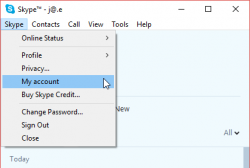
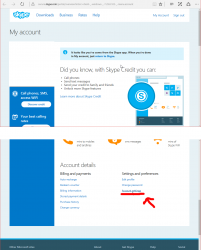
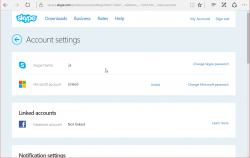
What I'd like to see is what newly created Skype-accounts have and make the original Skype-account be gone. As in merge/delete/drop. I don't need two separate logins for my Skype. Especially as there is no 2-FA, or login device history for it.
This is what you can do is make sure your Microsoft Account is secure. Login to https://account.microsoft.com/.
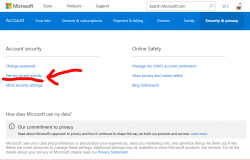
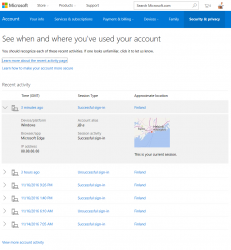
So, nothing wrong with my account. Here is an account having more-than-dubious history entry in it:
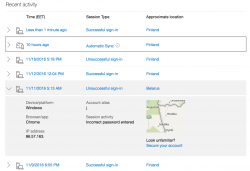
I've redacted the IP-address from Belarus. It's most likely some poor bastard's machine, which is cracked and used as a springboard forward.
What I'd like to see happen
Firstly Microsoft, the owners of Skype need to step forward and confirm that accounts with proper passwords are being used to send crap. They need to admit, that their systems are not recognizing any accepted password logins, but chat messages are still being sent by innocent people.
Secondly, they need to fix the issue. Whichever is broken there they need to address it. The worst case scenario is, that somebody can actually inject new chat messages out of thin air, without the sender being logged in.
Third, the old skype account login needs to be secured. That's the easiest one here to achieve. As newly created Skype-accounts are only via Microsoft Account, that shouldn't be much problem. Also I'd like to get rid of that login method. Update: Instructions for doing this are in my next post.
So, Microsoft, we're waiting for you.
Skype protocol hacked, part 2
Monday, November 14. 2016
On Friday 11th November, I got yet another Baidu-link from one of the same contacts, I've already received some.
As I've been communicating with the persons who are "sending" me these links, they have changed their Skype-password for their old logins since this incident gained publicity. At this point, I'm ready to bet serious money on the fact, that this is not what Microsoft officals state, a case of re-using leaked passwords. This is a serious incident with protocol having a security flaw which is being exploited by somebody who loves pointing a finger to Baidu. As the link-jumping ends at a fake Forbes site with a fake article about a miracle pill allowing you to access 100% of your brain, I don't think Chinese have anything to do with this case. IMHO this points to Russia based on the fact, that this link rotator is located in a .ru-domain and is located in St. Petersburg, Russia.
This is how the fake Baidu-link redirects your request:
- Initial site sent via Skype: http://www.baidu.com/link
- Link rotator: http://acondi.ru/
- Taget sites:
- http://dietzzfocon.com/ (USA)
- http://exsuperbrain.com/ (UK)
- http://weightuulossu.com/ (Netherlands)
- http://zbiginbrain.com/ (Netherlands)
- http://infocoolvip.com/ (Netherlands)
- http://habzbrain.com/ (USA)
- http://dietzzfocon.com/ (USA)
Microsoft:
Get your heads out of the sand! You have an issue to fix here.
Windows 10 update KB3200970 stuck
Thursday, November 10. 2016
Hands down KB3200970 is the worst update I've seen for Windows 10!
In general I hate Windows 10 TiWorker-process. It sucks CPU like there is no tomorrow. I cannot comprehend how difficult it is to determine if an update is needed or not. If you compare to any Linux .deb or .rpm packaging, a simple update check in Windows 10 is way too heavy. I find this kind weird. When Microsoft announced simplifying servicing models for Windows 7 and Windows 8.1, the reasons were to reduce scan times and finding right patches easier. It certainly doesn't feel like it to me.
So, there is Cumulative update for Windows 10 Version 1607 and Windows Server 2016, released November 8, 2016. This is also known as KB3200970 and boy, do people have trouble installing it!
For about 8 hours it was stuck there in the preparing phase. While doing absolutely nothing, this was my CPU-load:

Well done idiots! ![]()
Net is full of stories like mine: How to fix Windows Update in Windows 10 if it becomes stuck, Windows 10 KB3200970 issues: install fails, high CPU usage, battery drain and more and Cumulative Update for Windows 10 Version 1607 for x64-based Systems(KB3200970).
The Reddit-article had a link to KB971058, How do I reset Windows Update components? which helped some. I gave it a try and it did help.
First some services needed stopping. This is what you would run as an administrator cmd.exe:
net stop bits
net stop wuauserv
net stop appidsvc
net stop cryptsvc
In my case the wuauserv didn't stop, I had to find the process id for it and kill it manually. After all that, I attempted renaming:
Ren %systemroot%\SoftwareDistribution SoftwareDistribution.bak
Ren %systemroot%\system32\catroot2 catroot2.bak
First one failed, so I don't know what the impact was. Then I ran the entire list:
cd /d %windir%\system32
regsvr32.exe atl.dll
regsvr32.exe urlmon.dll
regsvr32.exe mshtml.dll
regsvr32.exe shdocvw.dll
regsvr32.exe browseui.dll
regsvr32.exe jscript.dll
regsvr32.exe vbscript.dll
regsvr32.exe scrrun.dll
regsvr32.exe msxml.dll
regsvr32.exe msxml3.dll
regsvr32.exe msxml6.dll
regsvr32.exe actxprxy.dll
regsvr32.exe softpub.dll
regsvr32.exe wintrust.dll
regsvr32.exe dssenh.dll
regsvr32.exe rsaenh.dll
regsvr32.exe gpkcsp.dll
regsvr32.exe sccbase.dll
regsvr32.exe slbcsp.dll
regsvr32.exe cryptdlg.dll
regsvr32.exe oleaut32.dll
regsvr32.exe ole32.dll
regsvr32.exe shell32.dll
regsvr32.exe initpki.dll
regsvr32.exe wuapi.dll
regsvr32.exe wuaueng.dll
regsvr32.exe wuaueng1.dll
regsvr32.exe wucltui.dll
regsvr32.exe wups.dll
regsvr32.exe wups2.dll
regsvr32.exe wuweb.dll
regsvr32.exe qmgr.dll
regsvr32.exe qmgrprxy.dll
regsvr32.exe wucltux.dll
regsvr32.exe muweb.dll
regsvr32.exe wuwebv.dll
Lot of them failed, but that's what the KB971058 told to do. Then starting the services:
net start bits
net start wuauserv
net start appidsvc
net start cryptsvc
Still this update tested my patience. It ran couple hours preparing after it announced, it's ready to go install. The installation took yet another couple hours. After the installation was completed and the obligatory reboot was done, Windows still reported that a reboot is required. This update really sucks ass!
Ultimately my laptop spent more than 50 hours to install all this. There were number of retrys and times than I didn't care to look to closely what's going on, so the machine had to wait for user interaction. Still the process was paintakingly long.
Skype protocol hacked
Wednesday, November 9. 2016
For the past couple of days, I've been getting weird Baidu links via Skype chat. The sender is somebody I actually know and is my contact. The messages do not stay in the message history for that person, nor they never received the reply I sent back when the link was received. It's really weird to receive such links to a Chinese search engine in the first place, but the elusive chat history is the definite clue: somebody hacked Skype's protocol. Also, I find it strange, that the link contains my Skype-handle in it (obfuscated in below pic).
I'm not alone with this phenomenon: Link to "baidu" website sent to all of my contacts.
As the messages I got are from actual contacts, I followed up on them. Both persons deny sending me such links, and their message history doesn't display the link either. So, I don't think that the personal accounts are cracked, it's the Skype servers that are being exploited. Hopefully Microsoft-guys figure this out and plug the hole.
Update:
Couple hours after posting this, somebody posted a link to Why are Skype accounts getting hacked so easily? into Skype's community discussion. The article makes a claim that Skype's 2-factor authentication can be circumvented easily by using the old Skype credentials. Looks like you can still log in with Microsoft-account (pretty secure) or the credentials used before Microsoft acquired Skype. The old credentials cannot have 2-FA set up into it and most likely you already forgot it even exists. That seems to be the way how nasty people make their way in.
Update 10th Nov 2016:
Recent buzz is about a similar incident last year, when users' Skype accounts were used to send spam. So, nobody has come forward with any proof that the protocol would be compromised. It is gearing towards to the fact that users didn't realize there are two separate passwords to their Skype account, and the non Microsoft-account had a weak password which was used to gain access to contact lists.
Update 14th Nov 2016:
Confirmed, that this is not a case of using leaked passwords, my second post about this is here.

